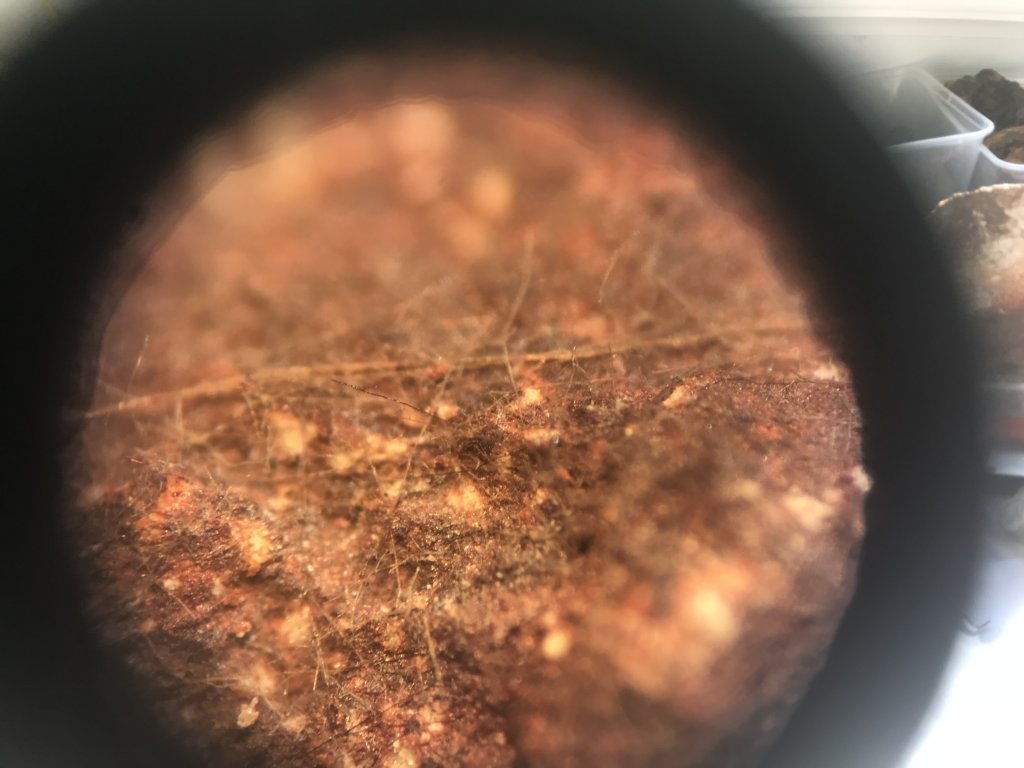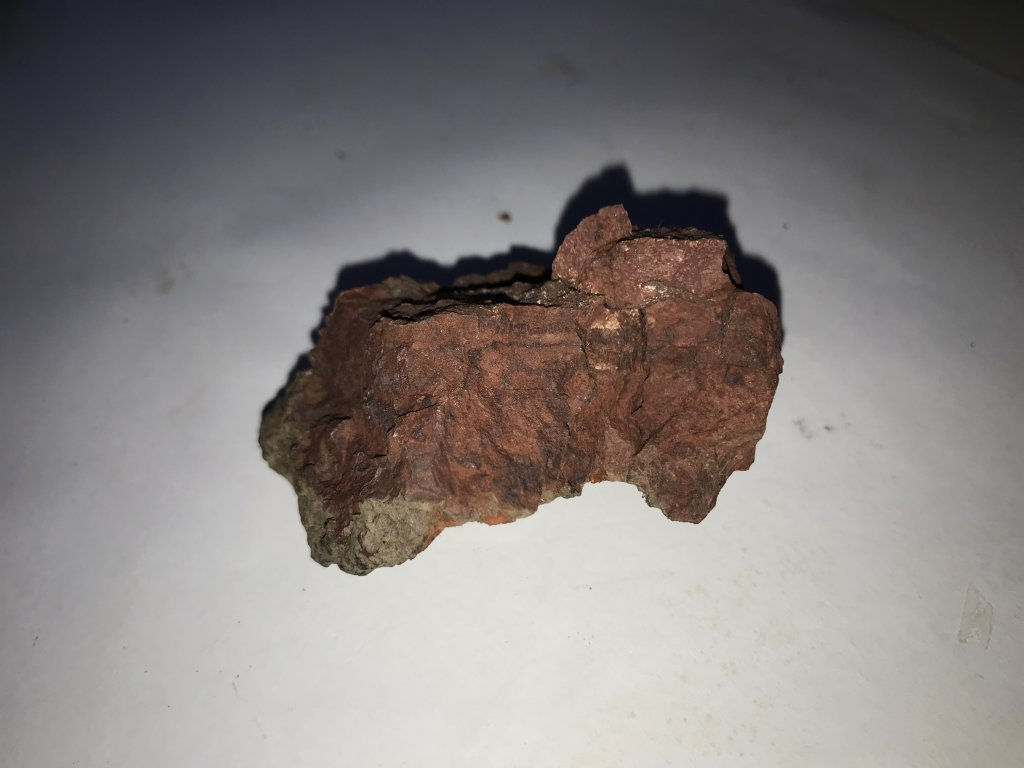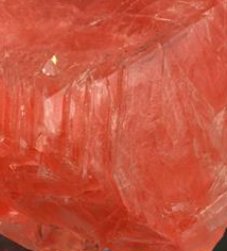-
Please join our new sister site dedicated to discussion of gold, silver, platinum, copper and palladium bar, coin, jewelry collecting/investing/storing/selling/buying. It would be greatly appreciated if you joined and help add a few new topics for new people to engage in.
Bullion.Forum

You are using an out of date browser. It may not display this or other websites correctly.
You should upgrade or use an alternative browser.
You should upgrade or use an alternative browser.
❓Your Mineral Identification Questions answered here
- Thread starter user 4386
- Start date

Help Support Prospecting Australia:
This site may earn a commission from merchant affiliate
links, including eBay, Amazon, and others.
- Joined
- May 1, 2014
- Messages
- 1,958
- Reaction score
- 2,530
Feathers12 said:Hello everyone .I was panning for gold today and I found this stone.I have no idea what it might be.I was hoping someone in this forum might be able to enlighten me thanks?https://www.prospectingaustralia.com/forum/img/member-images/12461/1531649685_img_20180715_182738.jpg
Hi Feathers.
As GR says, it's next to impossible to make a positive ID based on a photo alone in most cases.
All I can say is that the stone in the photo looks a bit like citrine. If it's of faceting quality, citrine can cut a very attractive stone. I've just finished one, will likely put the photo up on the forum this evening.
Cheers
- Joined
- May 1, 2014
- Messages
- 1,958
- Reaction score
- 2,530
goldierocks said:Lefty, citrine is quartz and has no cleavage - that looks like it is distinctly cleaved.
https://www.prospectingaustralia.com/forum/img/member-images/4386/1531799151_cleavage_mineral.jpg
The shape of the crystals at its base also look isometric or tetragonal, not trigonal.
https://www.prospectingaustralia.com/forum/img/member-images/4386/1531799191_crystal_unknown.jpg
GR - yeah I know
Cheers
Oops, my mistake - yes I agreeLefty said:Post #287 back on the previous page just above one of your own posts.
- Joined
- May 1, 2014
- Messages
- 1,958
- Reaction score
- 2,530
GR - are you able to translate this info from the Macrostat map into English please? 
Does this mean that the area in question is a hotch-potch of sedimentary materials and mafic volcanics all rolled in together? Volcanics punched up through sedimentary rocks in some parts of the area?
Also, what's the distinction between pyroclastic and volcaniclastic? It sounds like both were spat from volcanoes.
Cheers
Description: Mudstone, siltstone, sandstone, limestone, chert, basaltic to andesitic flows and pyroclastics and volcaniclastics.
Comments: argillaceous detrital sediment; igneous mafic volcanic; synthesis of multiple published descriptions
Lithology: argillaceous detrital sediment; igneous mafic volcanic
Does this mean that the area in question is a hotch-potch of sedimentary materials and mafic volcanics all rolled in together? Volcanics punched up through sedimentary rocks in some parts of the area?
Also, what's the distinction between pyroclastic and volcaniclastic? It sounds like both were spat from volcanoes.
Cheers
Wally69 said:Any ideas what this ??? It turned up in a bag of goodies I acquired.
https://www.prospectingaustralia.co...0644_44f085e3-52fb-468d-b1e5-c35f36454b6e.jpg
Bump
Wally69 said:
And a bump to this one too 8)
First one is interesting... Second looks like it has some Blue/ aqua colour to it Chryscolla( spell check) but it could just be the way the light is in the Background...
LW...
LW...
pyroclastics are clastic rocks composed solely or primarily of volcanic materials, usually deposited hot from volcanic ash clouds ("ash" is not ash of course, but tiny particles of lava and rock - the same as volcanoes don't produce a lot of what is truly "smoke").
Where the volcanic material has subsequently been transported and reworked through mechanical action, such as by wind or water, these rocks are termed volcaniclastic.
Pyros = fire (as in pyromaniac)
A clast is a particle or fragment.
So the cloud coming out of a volcano can be volcaniclastic. It settles on the ground, is rained upon, washed into lakes and rivers, and becomes a volcaniclastic sediment. Under the microscope pyroclastic rocks commonly contain sharp shards of volcanic glass (which if very hot when they land, weld together to form welded tuff, but often they are too cool). Volcaniclastic rocks show particles which are rounded, and often some that did not come out of a volcano. In outcrop volcaniclastic rocks often show textures related to sorting by water (size grading, scouring, cross-bedding), but pyroclastic rocks (many of which settle to the ground directly from suspension in air) do not.
In extreme cases volcanoes blast pyroclastics 15 km or so upwards - as the ash cloud collapses under gravity it becomes denser and reaches supersonic speed, shooting out horizontally in every direction when it hits the ground. Pyroclastic rocks that formed when Lake Taupo was generated in an eruption two thousand years ago moved in a cloud at supersonic speed and covered virtually the entire North Island of NZ, wiping out most plants and animals (it coloured the sky in China). There are other terms that we use (eg lahar = mud flow) which is volcaniclastic material made of originally pyroclastic material that has turned to mud and washed down the slope of a volcano, often rapidly with devastating results for villages below.
Where the volcanic material has subsequently been transported and reworked through mechanical action, such as by wind or water, these rocks are termed volcaniclastic.
Pyros = fire (as in pyromaniac)
A clast is a particle or fragment.
So the cloud coming out of a volcano can be volcaniclastic. It settles on the ground, is rained upon, washed into lakes and rivers, and becomes a volcaniclastic sediment. Under the microscope pyroclastic rocks commonly contain sharp shards of volcanic glass (which if very hot when they land, weld together to form welded tuff, but often they are too cool). Volcaniclastic rocks show particles which are rounded, and often some that did not come out of a volcano. In outcrop volcaniclastic rocks often show textures related to sorting by water (size grading, scouring, cross-bedding), but pyroclastic rocks (many of which settle to the ground directly from suspension in air) do not.
In extreme cases volcanoes blast pyroclastics 15 km or so upwards - as the ash cloud collapses under gravity it becomes denser and reaches supersonic speed, shooting out horizontally in every direction when it hits the ground. Pyroclastic rocks that formed when Lake Taupo was generated in an eruption two thousand years ago moved in a cloud at supersonic speed and covered virtually the entire North Island of NZ, wiping out most plants and animals (it coloured the sky in China). There are other terms that we use (eg lahar = mud flow) which is volcaniclastic material made of originally pyroclastic material that has turned to mud and washed down the slope of a volcano, often rapidly with devastating results for villages below.
Since it says flows, probably lava flows interbedded with sedimentary rocks (andesitic can mean intermediate to mafic but basaltic is mafic). I suspect that intrusive rocks would be on a different part of the map legend.Lefty said:GR - are you able to translate this info from the Macrostat map into English please?
Description: Mudstone, siltstone, sandstone, limestone, chert, basaltic to andesitic flows and pyroclastics and volcaniclastics.
Comments: argillaceous detrital sediment; igneous mafic volcanic; synthesis of multiple published descriptions
Lithology: argillaceous detrital sediment; igneous mafic volcanic
Does this mean that the area in question is a hotch-potch of sedimentary materials and mafic volcanics all rolled in together? Volcanics punched up through sedimentary rocks in some parts of the area?
Also, what's the distinction between pyroclastic and volcaniclastic? It sounds like both were spat from volcanoes.
Cheers
argillaceous = clayey
detrital (as in debris) = clastic sedimentary, consisting of individual grains (as distinct from chemical sedimentary like some carbonate rocks and cherts)
detritus
[dtrds]
NOUN
waste or debris of any kind.
"streets filled with rubble and detritus"
Sorry, missed that part of the question....
- Joined
- May 1, 2014
- Messages
- 1,958
- Reaction score
- 2,530
Thanks again GR :Y: That does look sort of like what I was looking at with my own eyes.
Yes, the two areas are adjoining one another on the map. The varied felsic intrusives run for some distance and look to be obviously part of the largely granitic-type mountain ranges that make up large parts of our area. Further out again, that gives way to pure granite.
Wherever I click on the map in the region I live, the word "igneous" usually pops up. Within a circular are about 100km in diameter the geology consists of a hotch-potch of intrusives: Hornblende quartz diorite, hornblende-biotite tonalite, biotite-hornblende granodiorite, local olivine-hornblende-augite gabbro, hornblende-biotite granite - Leucocratic biotite syenogranite - tonalite, diorite, granodiorite, granite, monzogranite, rhyolite, microgranodiorite - Layered troctolite, olivine-augite gabbro, biotite-hornblende-augite leucogabbro, ferrigabbro, anorthosite, clinopyroxenite, syenite dykes - etc,etc, too many to keep naming and...
extrusives: Olivine basalt, pyroxene andesite - rhyolitic ignimbrite, Rhyolitic, andesitic and trachytic volcanics, sandstone, shale - Aphyric to porphyritic dacite, locally flow banded and autobrecciated; welded crystal-poor dacitic ignimbrite - Basalt, andesite and related volcaniclastic rocks - and so on.
Must have been a hot, noisy place in ancient history.
I suspect that intrusive rocks would be on a different part of the map legend.
Yes, the two areas are adjoining one another on the map. The varied felsic intrusives run for some distance and look to be obviously part of the largely granitic-type mountain ranges that make up large parts of our area. Further out again, that gives way to pure granite.
Wherever I click on the map in the region I live, the word "igneous" usually pops up. Within a circular are about 100km in diameter the geology consists of a hotch-potch of intrusives: Hornblende quartz diorite, hornblende-biotite tonalite, biotite-hornblende granodiorite, local olivine-hornblende-augite gabbro, hornblende-biotite granite - Leucocratic biotite syenogranite - tonalite, diorite, granodiorite, granite, monzogranite, rhyolite, microgranodiorite - Layered troctolite, olivine-augite gabbro, biotite-hornblende-augite leucogabbro, ferrigabbro, anorthosite, clinopyroxenite, syenite dykes - etc,etc, too many to keep naming and...
extrusives: Olivine basalt, pyroxene andesite - rhyolitic ignimbrite, Rhyolitic, andesitic and trachytic volcanics, sandstone, shale - Aphyric to porphyritic dacite, locally flow banded and autobrecciated; welded crystal-poor dacitic ignimbrite - Basalt, andesite and related volcaniclastic rocks - and so on.
Must have been a hot, noisy place in ancient history.
- Joined
- May 1, 2014
- Messages
- 1,958
- Reaction score
- 2,530
Wally69 said:Wally69 said:Any ideas what this ??? It turned up in a bag of goodies I acquired.
https://www.prospectingaustralia.co...0644_44f085e3-52fb-468d-b1e5-c35f36454b6e.jpg
Bump
Does that strange pyramid have four sides?
Lefty said:Wally69 said:Wally69 said:Any ideas what this ??? It turned up in a bag of goodies I acquired.
https://www.prospectingaustralia.co...0644_44f085e3-52fb-468d-b1e5-c35f36454b6e.jpg
Bump
Does that strange pyramid have four sides?
3 sides on all faces Lefty
Really need hardness, lustre and streak - are thin films of it transparent? Photos alone are rarely diagnostic.Wally69 said:Lefty said:Wally69 said:Wally69 said:Any ideas what this ??? It turned up in a bag of goodies I acquired.
https://www.prospectingaustralia.co...0644_44f085e3-52fb-468d-b1e5-c35f36454b6e.jpg
Bump
Does that strange pyramid have four sides?
3 sides on all faces Lefty
- Joined
- Jul 29, 2018
- Messages
- 15
- Reaction score
- 6
Hello All
I've been trying to find out more about the thread like formation in attached microscope view which is 2 Sqmm. The rock comes from SE Queensland from a fault system.
Some threads look like copper but the second type is whitish yellow "fibre like" made of thinner stands. Its not organic as I have broken the rock in multiple cleavages and it is present throughout the rock. Is there a term to describe this formation as I havent been able to find out anything on the web.
Any idea on what mineral it could be?
Does copper present this way?
I have found a sample of Cuprite in the area as well


I've been trying to find out more about the thread like formation in attached microscope view which is 2 Sqmm. The rock comes from SE Queensland from a fault system.
Some threads look like copper but the second type is whitish yellow "fibre like" made of thinner stands. Its not organic as I have broken the rock in multiple cleavages and it is present throughout the rock. Is there a term to describe this formation as I havent been able to find out anything on the web.
Any idea on what mineral it could be?
Does copper present this way?
I have found a sample of Cuprite in the area as well


Similar threads
- Replies
- 8
- Views
- 8K
- Replies
- 76
- Views
- 25K
- Replies
- 41
- Views
- 15K




